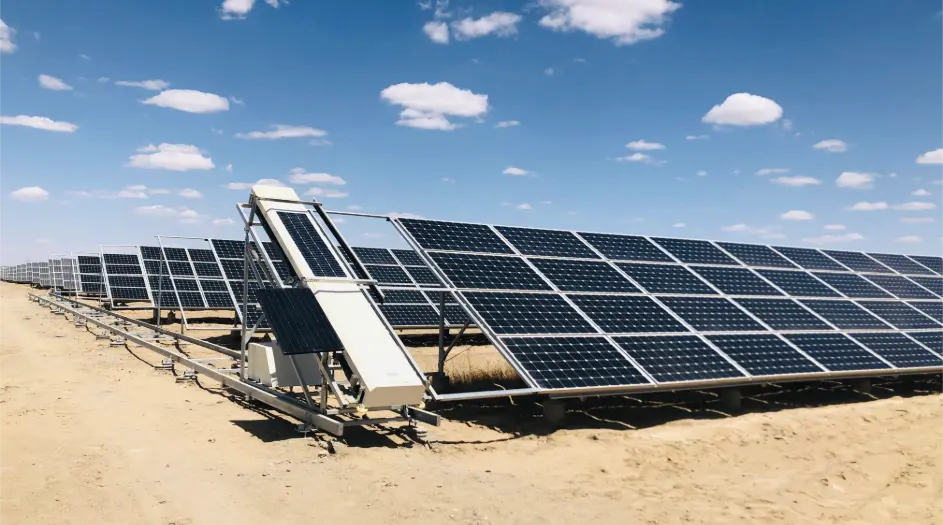Waterless solar panel cleaning robots represent an emerging cleaning solution that has become increasingly mainstream due to their numerous advantages. Below are the main benefits of these robots and their specific contributions to solving environmental issues:

Advantages of waterless solar panel cleaning system
1. Water Resource Conservation
Waterless cleaning robots eliminate the need for water during the cleaning process, effectively addressing the issue of water resource wastage. This is particularly significant in arid regions, where water scarcity is a concern. By utilizing a combination of brushes and cloths, these robots achieve efficient cleaning without consuming any water.
2. Reduction of Chemical Pollution
Typically utilizing physical cleaning methods such as brushes and suction, waterless cleaning robots do not rely on chemical cleaning agents. This dramatically lowers the risk of chemical contamination of soil and water bodies. In contrast, traditional cleaning methods often rely on detergents containing surfactants and other chemical additives, which can lead to severe environmental contamination over time. Waterless robots avoid this issue altogether.
3. Environmental Protection
Waterless cleaning robots do not produce wastewater, thereby preventing direct pollution of surrounding water bodies and soil, which helps protect the ecosystem. For example, advanced waterless cleaning robots have demonstrated excellent cleaning performance while effectively minimizing the discharge of harmful chemicals into the environment.
4. Increased Cleaning Efficiency
Equipped with multiple sensors and advanced control systems, waterless cleaning robots can autonomously plan their cleaning paths to ensure comprehensive coverage of solar panels without missed areas. This not only boosts cleaning efficiency but also reduces unnecessary cleaning efforts. For instance, robots designed for large scale cleaning can adapt to varied panel sizes and terrains to ensure effective cleaning.
5. Reduced Labor Costs
With a high degree of automation, waterless cleaning robots can independently perform cleaning tasks, thereby reducing reliance on human labor and lowering associated costs. Especially in rooftop solar power stations, these robots can autonomously conduct cleaning without human intervention, effectively decreasing operational costs and minimizing safety risks.
6. Strong Adaptability
The compact design and lightweight nature of waterless cleaning robots allow them to function effectively in diverse installation environments, including mountainous and aquatic terrains. Certain models can navigate varying slopes and complex landscapes, making them suitable for multiple cleaning scenarios.
7. Economic Viability
While initial investment costs for waterless cleaning robots may be high, their long-term benefits, such as water savings, reduced labor costs, and lower environmental pollution, demonstrate clear economic advantages. For instance, a waterless cleaning robot for a 1 MW solar installation can reduce cleaning cycles by approximately 22.6 days and cut cleaning costs by about 86.52%, showcasing significant economic benefits.
8. Technological Advancement
With ongoing technological improvements, the performance of waterless cleaning robots continues to enhance, leading to increased cleaning efficacy and reliability. This positions them as a dominant solution for solar panel cleaning. For example, innovative cleaning robots developed by universities and research institutions are set to further advance the industry.
Abschluss
Waterless solar panel cleaning system offer remarkable advantages in addressing the environmental impacts associated with cleaning solar panels. They not only enhance cleaning efficiency and reduce operational costs but also protect the environment, providing notable economic and ecological benefits. Despite challenges such as high initial investments and the need for further technological maturation, these robots are expected to gain broader adoption as technology evolves and costs decrease.